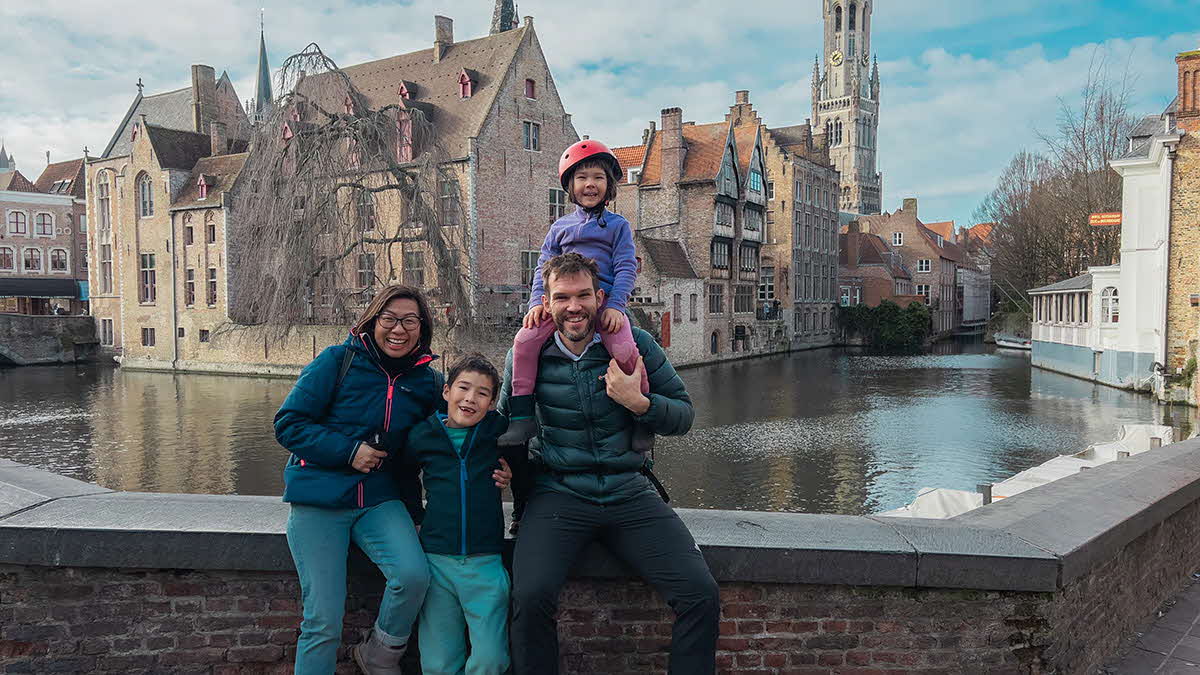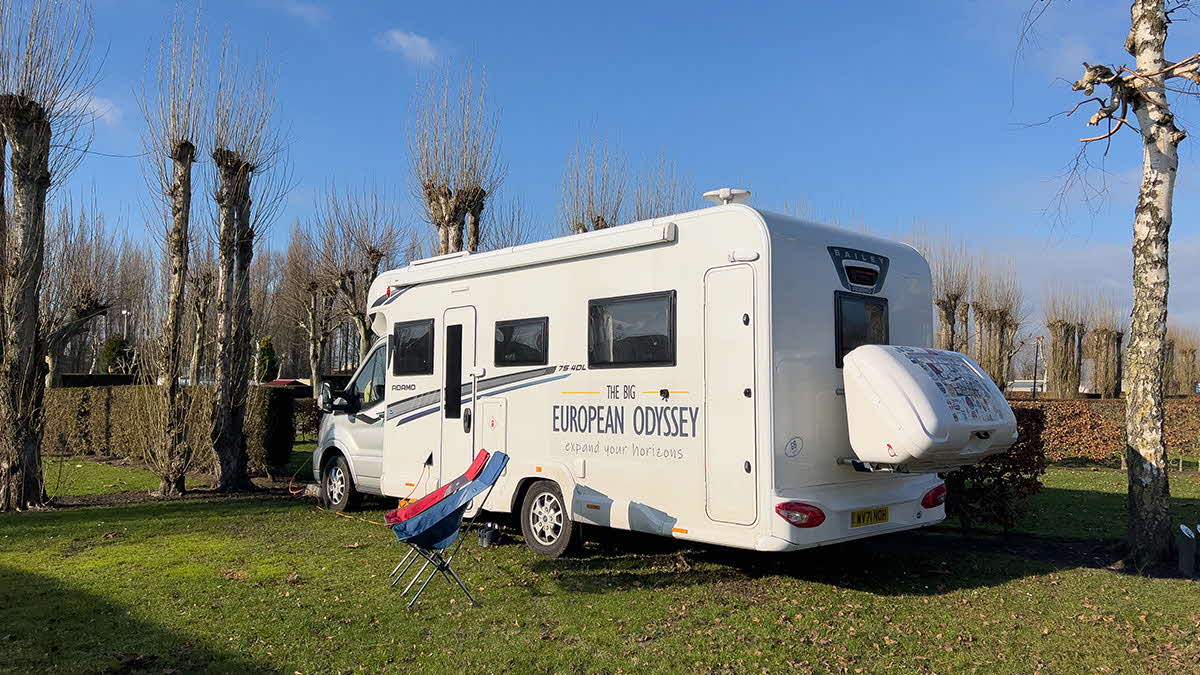Big European Odyssey - A Guide to Bruges
Journalist, blogger and vlogger, Marcus Leach, takes his family on a motorhome adventure across Europe over the course of a year. Follow their journey using Caravan and Motorhome Club sites and credited locations across a wide range of countries that they plan to visit.
What’s the best part of plans unexpectedly changing? Before we go any further it’s worth mentioning there isn’t a punchline to this question, only an honest response. For the answer lies in the question itself, because there is something almost magical about the unexpected. Free from expectation, life takes on a new dimension, our minds open to all manner of exciting possibilities and discoveries, as we recently discovered in Bruges.

By now we should have been in Morocco on The Big European Odyssey, basking in winter sunshine and exploring the many medinas and souks scattered across a country full of mystique and wonder. Instead, due to an unforeseen incident in Spain at the end of last year, we ended up detouring back to the UK in order to focus on improving my rapidly deteriorating mental health.
With this process in hand, and with some spare time before commencing our journey south to Morocco we had a decision to make; stay in the UK or head across to Northern Europe for a few weeks. And so it was that we found ourselves pitched up at the wonderful Klein Strand campsite on the outskirts of Bruges at the start of a mini adventure exploring Belgium and the Netherlands.

Europe is blessed with charming cities, and in Bruges it has one of the very best. It’s small enough to not be overwhelming, big enough to house a wide array of fascinating sites, buildings and attractions (not to mention a glut of world class chocolate shops) and close enough to Calais to make it the ideal destination for a long weekend away in your motorhome or caravan.

At the heart of the city are the almost perfectly preserved old medieval quarters, where a string of ancient cobbled lanes and dreamy canals intertwine to create a fairy tale atmosphere.
What To See and Do
The Belfry: A thirteenth century bell tower might not seem like the most obvious tourist destination, especially given that to reach the top you must first conquer 366 steps. However, don’t let the steps put you off, because this striking tower at the heart of the city makes for a fascinating visit. Each level on the way up provides a unique insight into the city’s rich history, one that dates back to the Middle Ages when it was at the heart of European trading. For all of the historical insight it’s the impressive music drum that operates the carillon and the keyboard used by the city carillonneur to play the tower’s 47 carillon bells that steals the show. Time your visit right and you will be at the top marvelling at the views of the city below as the bells play, a unique experience if ever there was one.
The Historium: There was a time when, thanks to the canals that still link it to the sea, Bruges flourished as one of Europe’s main cities for international merchants. It was here that the very first stock exchange was founded in 1309, sparking a Golden Age in the history of the city. This intriguing period is wonderfully brought to life at the Historium through a series of immersive and interactive experiences that take you back hundreds of years. A brilliant family activity that balances education with fun, ensuring even the smallest children stay engaged throughout.
Rosary Quay: There’s a reason that ‘Rozenhoedkaai’ is the most photographed spot in all of Bruges, it’s simply stunning and should not be missed. With the iconic old tree, buildings from yesteryear, the top of the Belfry tower visible in the background and the canal in the foreground, it is quintessential medieval Bruges. Beyond being a beautiful location for photography it is also one of the locations where you can start a canal boat tour, as well as being located next to the Tanner’s Square and the Fish Market, both worth visits in their own right.
Beguinage: Amidst the hustle and bustle of the charming streets of Bruges is a corner of such peace and tranquility that it feels as if you’ve stepped into another realm entirely. Founded in 1245 the Princely Beguinage Ten Wijngaarde, to give it its full name, was once the home of the beguines, emancipated lay-women who nevertheless led a pious and celibate life. Today it is still inhabited by nuns of the Order of St. Benedict and several Bruges women who have decided to remain unmarried. With its white-coloured house fronts, tranquil convent garden and quaint St. Elisabeth Church it makes for a delightful interlude to any city tour.
Walking Tour: Thanks to its compact size the best way to explore Bruges and all of its many wonders is by foot. Visit Bruges have created four walks that showcase the very best of the city, from its world heritage locations through to more contemporary hotspots and everything in between. All the walks, with detailed directions and plenty of information on the sites and attractions you can see along the way, are detailed in the Oooh Bruges walking guide, available from Stationsplein (Railway Station), in 't Zand (Concert Hall) and at the Historium.
Canal Boat Tour: By taking to the waterways that have been the veins of the city for hundreds of years you will have your eyes opened to sites that can only be seen by boat. From the tranquil canals you will be able to discover secret gardens, ancient bridges and medieval facades. Boats don’t run all year round (mid-March to mid-November), and can get very busy in peak summer months so it is advised to go earlier in the day during such periods.
How to Get There
The quickest and easiest way to travel to Bruges from the UK is on the Euro Tunnel, with the crossing taking less than forty minutes, after which it is a shade over 100km to Klein Strand in Jabbeke, taking the A16 and E40. It’s a ten minute walk from the campsite into Jabbeke itself, where bus 52 runs throughout the day into the heart of Bruges. The journey takes half an hour and costs €2.50 per person each way.
Where to Stay
Located a short bus ride away in the quiet town of Jabbeke, Klein Strand is the ideal campsite from which to explore Bruges. The site is open all year round, although some of the facilities are not open during the quieter months, and boasts a large number of fully serviced pitches. We stayed here for four nights and couldn’t have been happier with our time here. The shower block was heated and cleaned daily, there was an adventure park for the children to play in and a bar and a Chinese restaurant serving food and drink daily. There are three different supermarkets in Jabbeke, as well as an excellent bakery and an array of traffic-free cycling routes in the surrounding area.

